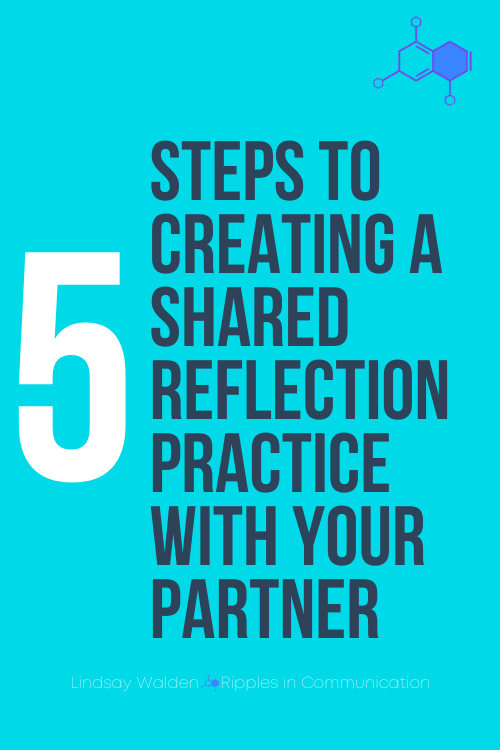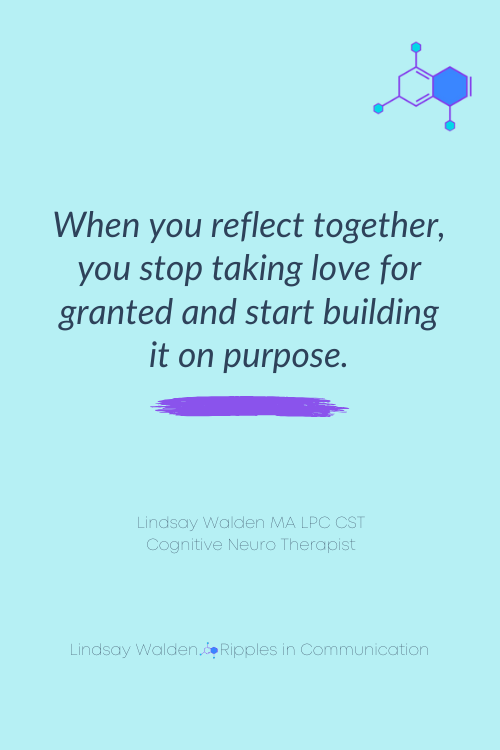Stop Repeating the Same Fights: How to Reflect with Your Partner for Real Growth
When couples struggle in their relationship, most focus on what’s happening right now. The latest argument. The emotional distance. The feeling that something is off, but they can’t quite put their finger on it.
But there’s a powerful tool many couples overlook—one that not only deepens connection but actively rewires how you relate to each other. It’s not a new communication hack. It’s not another date night.
It’s shared reflection—taking intentional time to look back on your relationship, your patterns, your wins, and even your hard moments—together.
Shared reflection helps couples strengthen emotional bonds, recognize growth, and develop a deeper understanding of what makes the relationship work (or not). And when practiced regularly, it becomes one of the most emotionally intelligent habits a couple can build.
I’ve got something for you!
Have you grabbed your FREE CNT Toolkit Sampler yet? It’s packed with science-backed tools designed to help you regulate emotions, manage stress, and develop deep self-awareness. If you’ve ever felt overwhelmed by your reactions or stuck in negative thought patterns, this toolkit will give you the proven strategies I use with clients to help them strengthen emotional neutrality, rewire unhelpful responses, and build lasting resilience. Inside, you’ll find practical exercises and guided reflections to help you navigate challenges with clarity and confidence. Enter your email below, and I’ll send it straight to your inbox!
Why Reflection Strengthens Your Relationship (and Your Brain)
From a neuroscience perspective, shared reflection activates the regions of the brain tied to emotional memory, bonding, and appreciation. When couples reflect on meaningful moments—whether joyful or challenging—they reinforce neural pathways associated with connection and empathy.
Here’s what happens in the brain:
Reflecting on positive experiences releases dopamine, increasing emotional closeness.
Discussing past challenges in a calm, safe space shifts you from a reactive state to a place of curiosity and understanding.
The more you practice recalling moments of love and support, the more those emotional circuits are strengthened—making it easier to feel connected, even during difficult times.
In short, reflection creates emotional safety and reinforces the foundation of your relationship—without needing a crisis to spark the conversation.
The Emotional Impact of Looking Back—Together
Reflection helps couples move beyond surface-level connection. When you reflect together intentionally, you start to:
Recognize and interrupt harmful patterns before they repeat.
Build a shared story that reinforces love and growth.
Feel more seen, understood, and valued in your day-to-day life.
When you don’t reflect, it’s easy to slip into autopilot. You may forget how far you’ve come. You miss the small moments of progress. You may even feel stuck in the same cycles, wondering if anything is actually changing.
But when you create space to look back—without judgment—you begin to see your relationship for what it really is: a living, evolving partnership with potential for deep transformation.
How to Build a Shared Reflection Practice
Reflection works best when it’s intentional. Here’s how to make it part of your relationship rhythm—not just something you do once in a while when things feel off.
1. Create a Reflection Rhythm That Works for You
Instead of waiting for the “right time,” build in regular opportunities to reflect as a couple. That could mean:
Weekly check-ins to process how you both felt throughout the week—what worked, what didn’t, and what you appreciated about each other.
Monthly reflections to identify larger patterns, growth, and areas that need more attention.
Yearly reflections to celebrate your journey, revisit shared goals, and dream about what’s next.
The structure doesn’t matter as much as the consistency. Even short conversations can create major shifts when you make space for them regularly.
CNT Tip: Choose a setting that feels low-pressure and safe—like a walk, a cozy night in, or over coffee on a Sunday morning.
2. Use Prompts to Go Deeper (Not Just “How Was Your Day?”)
Vague questions lead to vague answers. Reflection becomes much more impactful when guided by thoughtful prompts.
Here are a few examples to try:
Weekly:
What’s one moment this week that made you feel close to me?
Was there a small disconnect we can learn from?
How did we support each other well?
Monthly:
What relationship strengths did we lean into this month?
What challenge did we face, and how did we move through it?
What’s one thing we want to work on together next month?
Yearly:
How have we grown—individually and as a couple?
What’s a highlight we’re most proud of?
What are we excited to build together next year?
Writing these answers down before discussing them can be incredibly helpful. It gives each person time to process their thoughts individually before entering a vulnerable conversation.
CNT Insight: When you write before you talk, you avoid reactive communication and create space for genuine understanding.
3. Revisit Conflict Without Reopening Old Wounds
It’s normal to avoid looking back at arguments. No one enjoys rehashing a fight. But reflection isn’t about blame—it’s about learning.
One of the most powerful ways to grow together is by gently exploring what happened after the emotions have cooled.
Ask yourselves:
What emotions came up for me during that conflict?
How did I show up—did I escalate or contribute to the resolution?
What could I do differently next time?
This helps shift conflict from a place of damage to a space of healing and responsibility. It also reduces the chances of repeating the same argument again and again.
4. Reflect on the Good Stuff, Too
Conflict isn’t the only thing worth reflecting on. One of the most neglected parts of long-term relationships is positive reflection.
Take time to celebrate the small things. A glance of appreciation. A shared laugh. A moment of teamwork. A hard day you got through together.
Try this:
What’s something your partner did this week that made you feel loved?
What’s a memory from your early relationship that still makes you smile?
When did you last feel truly connected?
Gratitude and emotional recall build resilience. They remind you that love still lives here, even on the hard days.
5. Use Reflection to Set Relationship Intentions
Once you’ve looked back, don’t stop there. Use your insights to set intentions that move your relationship forward.
Ask each other:
What’s one small shift we want to focus on this week?
How can we better support each other in the month ahead?
What do we want to feel more of in this season of our relationship?
Then write it down. Check in. Adjust as needed.
This turns reflection into transformation—and ensures your relationship keeps evolving instead of drifting into emotional autopilot.
How to Make Reflection a Lasting Habit (Not a One-Time Talk)
Reflection only works if it becomes a regular rhythm—not something you pull out in a crisis.
Here’s how to make it stick:
Put it on the calendar. Treat it like a date or an important meeting.
Make it feel good. Pair it with something enjoyable—coffee, a walk, or your favorite takeout.
Track your growth. Use a shared journal to look back on previous reflections.
Give yourself grace. Your rhythm might shift with life seasons—what matters is that you come back to it.
CNT Practice: At the end of your next reflection session, write down one way you’ll keep this habit going. Whether it’s weekly or monthly, choose something that feels doable and build from there.
Final Thoughts: Why Shared Reflection Changes Everything
Reflection is the antidote to emotional drift. It brings you back to each other. It creates space for curiosity instead of blame. And it reminds you that you're not just reacting to life—you’re building something meaningful, together.
When you reflect with your partner:
You grow closer, even in conflict.
You feel more seen, valued, and emotionally supported.
You stop repeating the same patterns—and start creating new ones.
If you’re ready to bring reflection into your relationship in a grounded, structured way, the CNT Shared Relationship Journal was designed exactly for this. It includes guided prompts, emotional tracking tools, and neuroscience-backed exercises to help you and your partner grow together with intention.
→ Grab your copy here and start reflecting with your partner today.







